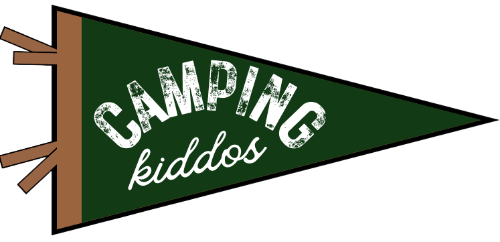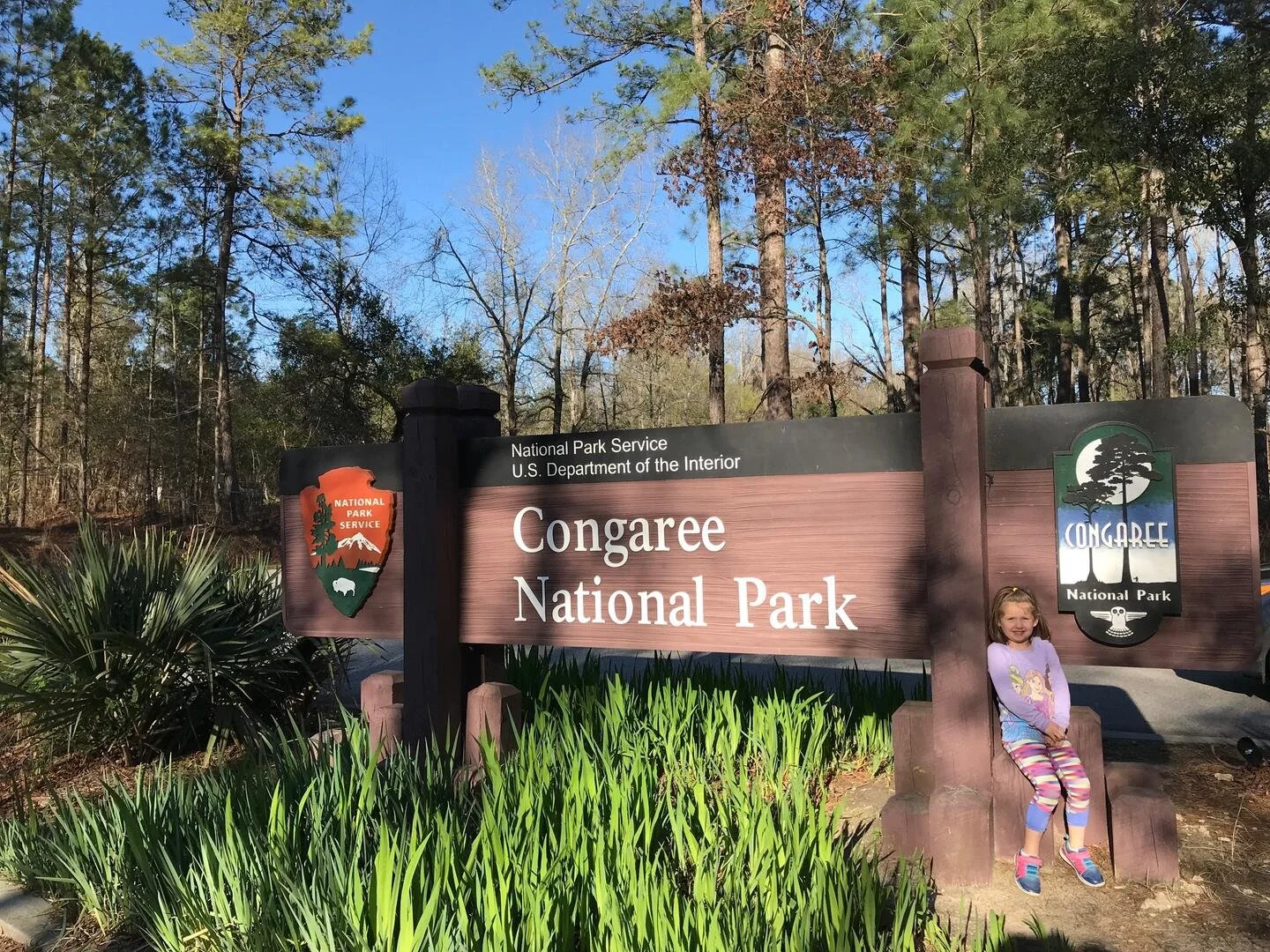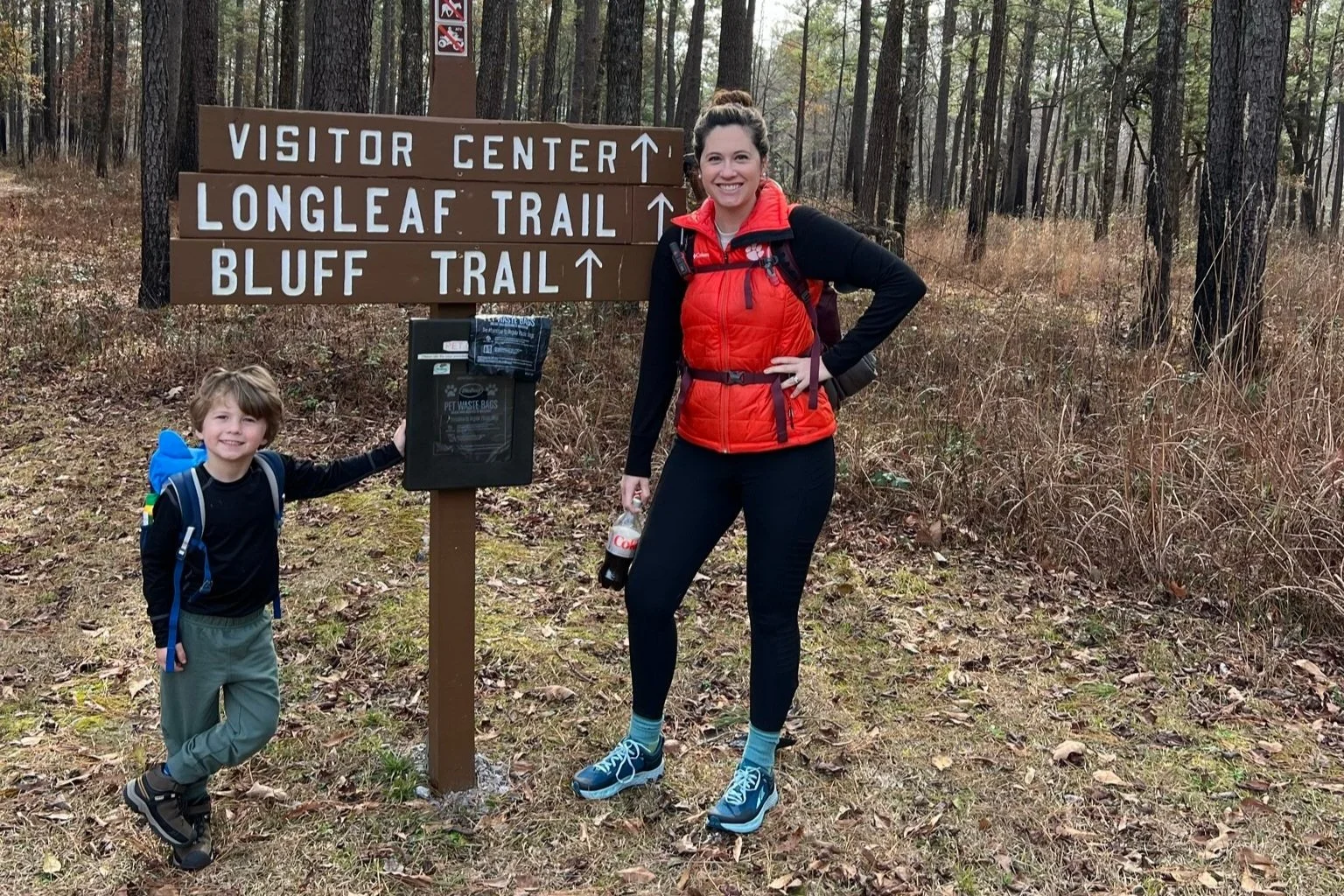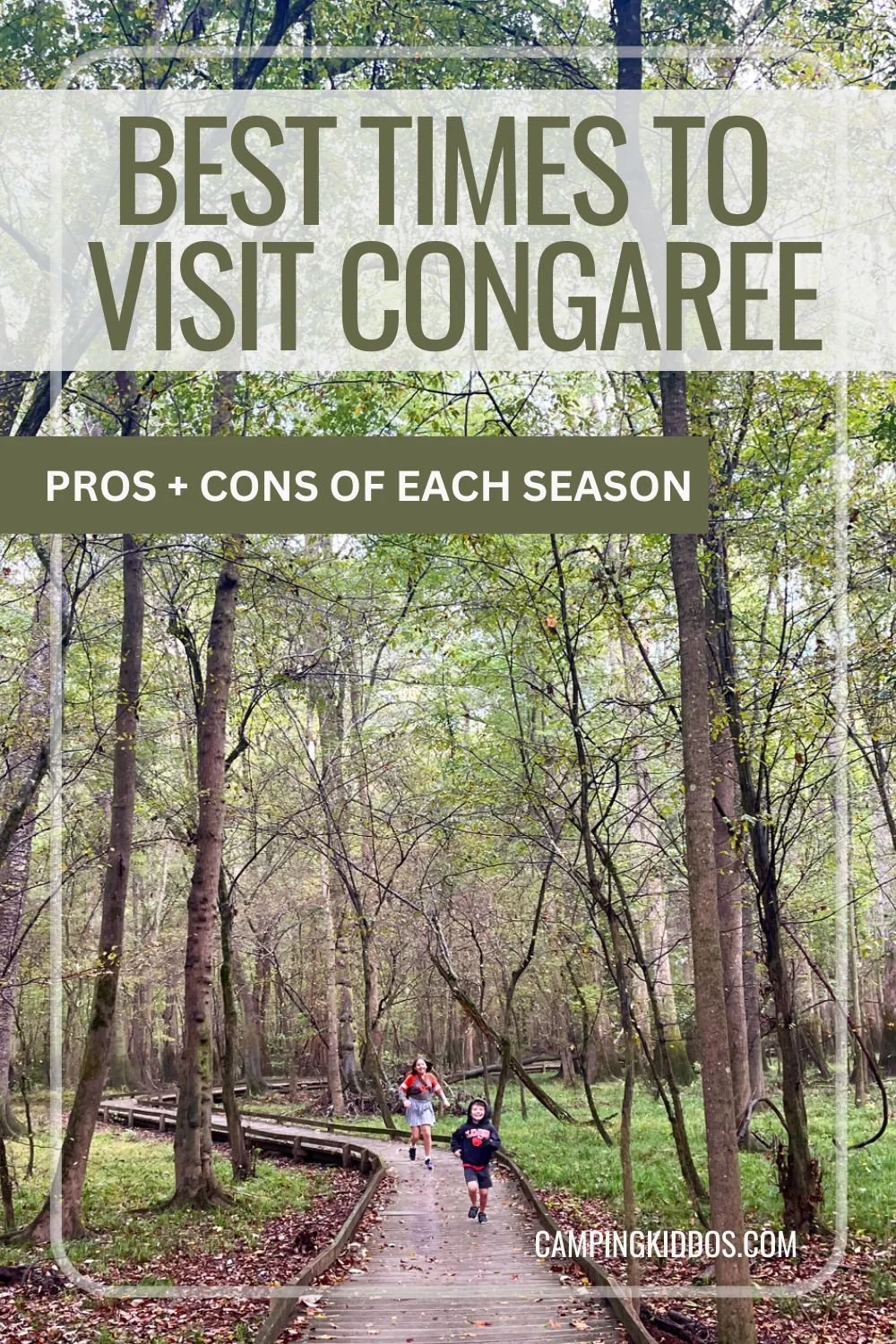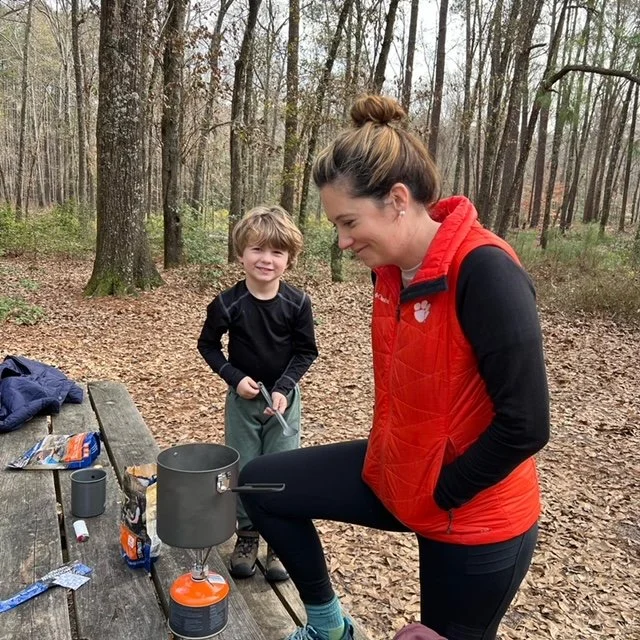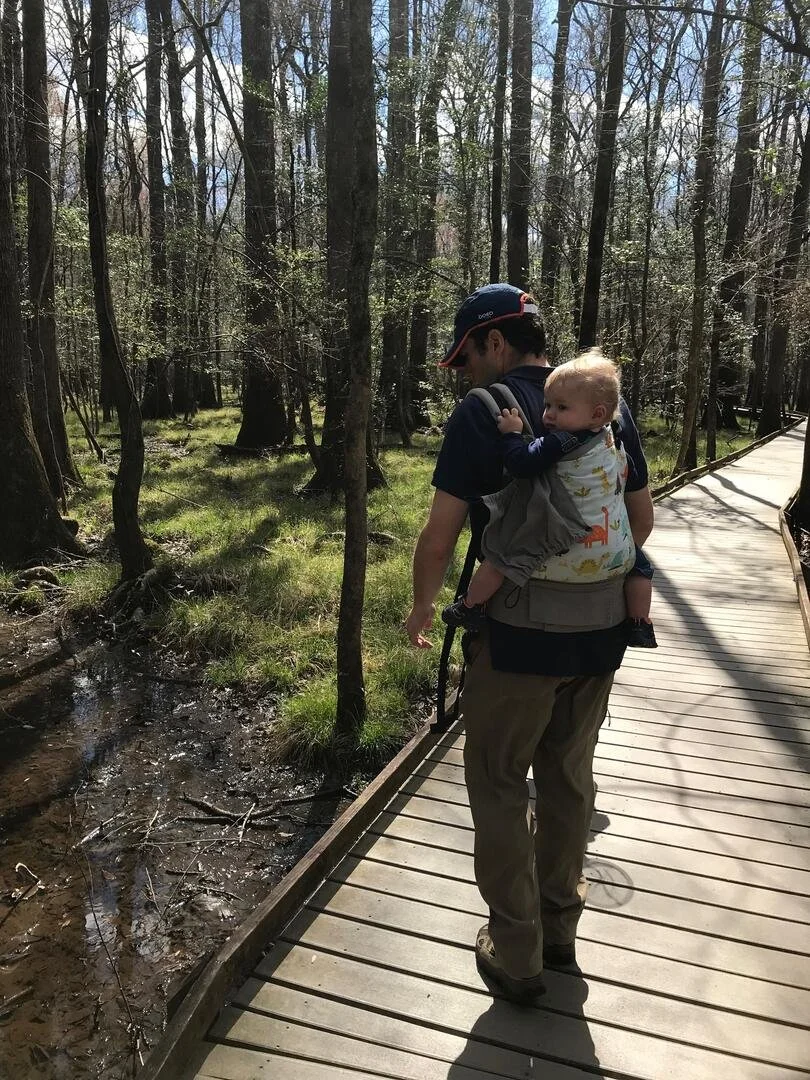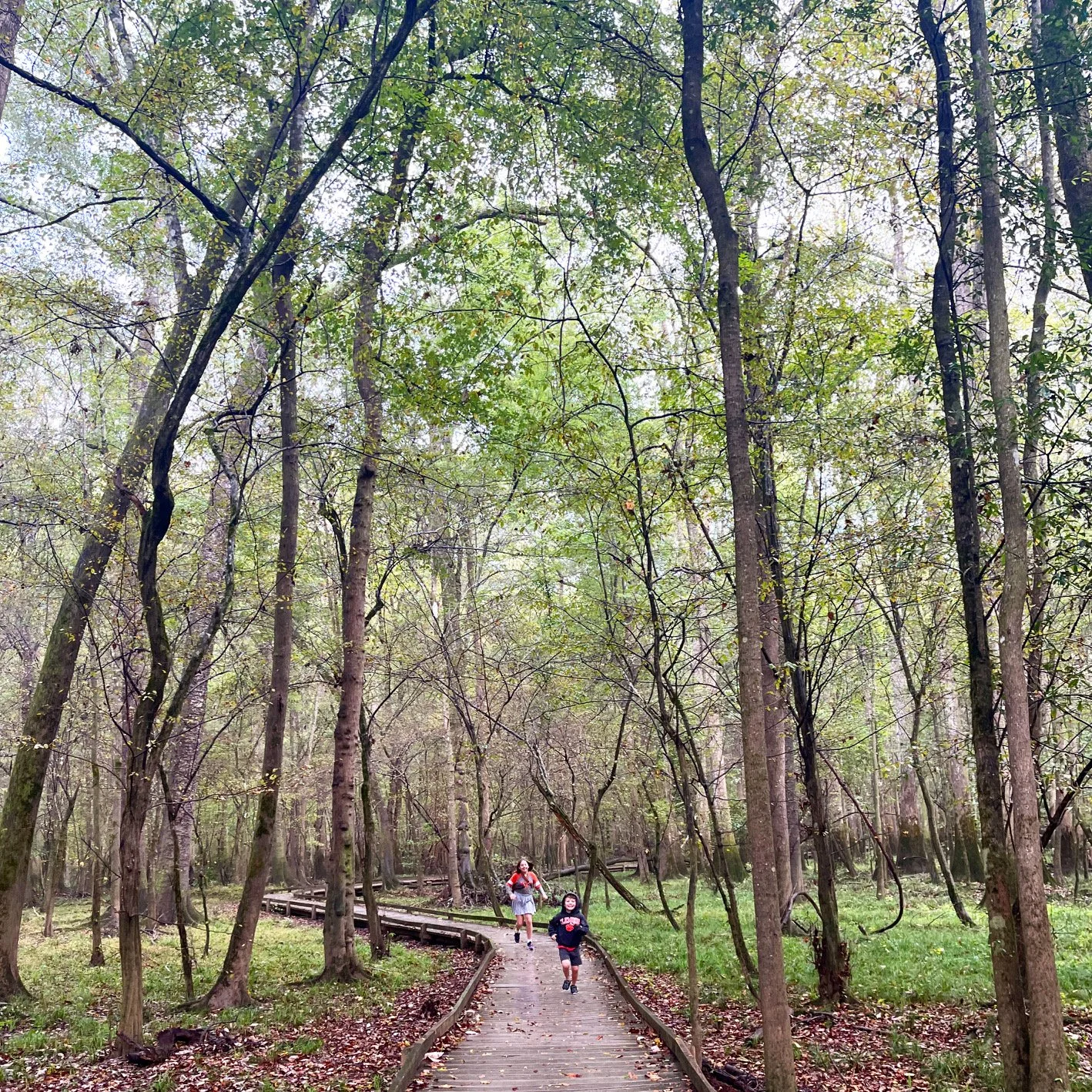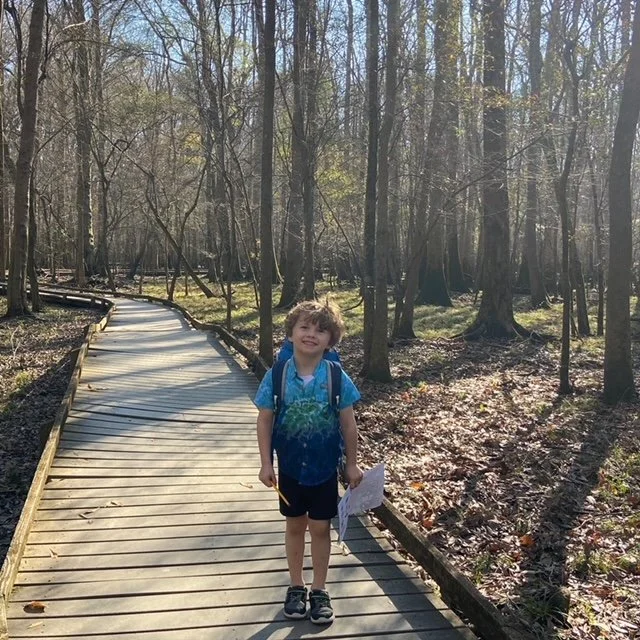The Best Time to Visit Congaree National Park
What’s the best time to visit Congaree National Park? That’s a question I hear often, so I’m breaking down the pros and cons of each season in this southern destination.
This often overlooked national park just south of Columbia, South Carolina, is actually a treasure trove of wildlife, champion trees, and pristine natural experiences.
We live less than 45 minutes from Congaree, so my family and I consider it our home park. We can be found there throughout the year hiking, camping, attending ranger programs, and working towards (another) Junior Ranger badge.
Below, you’ll find what to do at Congaree National Park in each season, as well as what to expect from the weather, crowd levels, and camping areas.
Perhaps more than any other park in the southeast, Congaree changes by the month, and sometimes by the day.
Whether you visit once or again and again, there’s always something new to discover in this sprawling patch of protected hardwoods and cypress swamp.
The older Camping Kiddo at the entrance sign to Congaree National Park
This post contains affiliates. If you purchase through the links below, I will receive a commission at no charge to you.
Congaree National Park: Pros and Cons of Each Season
To some people, Congaree is just a boring forest. I’ve even heard people describe Congaree as “disappointing” and “something that shouldn’t be a national park.”
Poor Congaree. It’s HIGHLY underappreciated in my view, and it has something to offer visitors in every season. (Even if that “something” is mostly bugs in the summer. Ha.)
Since we live so close to the park, we have the unique opportunity to explore it from January to December. I promise: the park has so much more than boring trees.
Though, honestly, trees are pretty interesting—especially these trees.
Did you know that Congaree National Park is home to some of the tallest trees on the entire East Coast? You’d have to go to California’s redwood forests to top the champion trees in South Carolina.
Plus, there’s hiking, boating, and camping in the heart of South Carolina. In fact, I think it’s one of the best national parks on the East Coast.
If you’ve never been to a national park, I’d recommend reading my national parks for beginners guide to help you plan your trip.
Let’s dive into what you should expect in Congaree in each season.
(And if you want more reasons why this national park should be on your travel list, check out my post on why Congaree National Park is worth visiting.)
Congaree National Park in the Winter
Winter temperatures at Congaree
While I might think I’m freezing to death in February, our winter weather isn’t bad compared to what the North and Midwest go through.
We will have the occasional hard freeze, but that’s the exception rather than the rule. The winter weather fluctuates wildly from year to year, so you’ll want to watch your weather app in the days leading up to your Congaree visit.
Our winters also tend to be dry until late February, which is when we begin to see more rain leading into spring.
Ultimately, the winter season is the best time of the year to get outside here in South Carolina as the average day time temperatures are perfect for hikes and wildlife viewing.
Congaree National Park Winter Avg. Temperatures
What to do here in December, January, and February
My son and I heading out for a January hike from the camping parking lot to the visitors center
The best part of visiting during the winter is the fact that you’ll have the park to yourself! (See the section about crowd levels below.)
There are still ranger programs offered throughout the colder months, though they aren’t provided as frequently as busier times of the year.
Since South Carolina’s winter are pretty mild compared to other areas of the country, our wildlife stays fairly active year round.
PIN ME!
The winter months are great times to take a kayaking or canoe trip, either on your own or with a guided group.
Carolina Outdoor Adventures runs small group kayaking tours through the cypress swamp year-round.
NOTE: The Congaree River can and will flood during the late winter and early spring. Sometimes, this process will cover large areas of the Congaree flood plain, in which the national park resides.
Check the weather before you’re visiting between late February and April—if there’s been heavy rain, call the park to see what the flood levels are like.
This flooding is a natural part of the ecosystem here and helps to keep the forest and its inhabitants healthy.
However, the most severe flooding can interrupt your park visit if the boardwalk is flooded in sections.
Expected Winter Crowd Levels
Congaree National Park has turned into a popular location for the First Day Hike on New Year’s Day.
We did the boardwalk hike to kick off our year last year, and we passed more than a dozen other parties on the 2.5 mile loop.
TIP: It’s always helpful to get up-to-the minute notes on hiking trails, so I recommend scoping out the trails at Congaree National Park on AllTrails+ before you go.
However, if you can wait just a day or two, you’ll have the park to yourself as the winter months see the lowest crowds in this national park.
Part of that is due to winter being the low tourism season in all of South Carolina, and part of it is that the weather isn’t the most consistent at this time of the year.
[For more suggestions on what to do this time of year in South Carolina, check out my list of the best things to do in Charleston in winter!]
Winter Camping Pros and Cons
Trying my best to stay warm while cooking up some camping meals in the Bluff campground
While the days are pleasant, the nights can get downright chilly.
You’ll be able to have your pick of camping spots at either the Bluff or Longleaf campgrounds. If you’re seeking some solitude in a national park, you’re unlikely to have many neighbors this time of the year.
Keep in mind that Bluff campground is a hike-in—it’s a little over a mile from the campers’ parking lot. If the weather does turn bad or the temperatures drop unexpectedly, you might have a wet, cold hike back to your car.
The Longleaf Campground is much more convenient with sites just a few dozen feet from the parking area.
However, in both campgrounds, you won’t have any electric hookups. If you’re cold-natured like me, you’ll need to work overtime with clothing, blankets, and tea on the Bunsen burner to stay warm.
Since we live so close to Congaree, we often find ourselves heading up there when we know the crowds are low. It’s SO serene in the campgrounds in the winter, even on the weekends.
Plus, there are no bugs this time of year. That alone is worth making plans to winter camp here.
If you can brave the colder nights, this is an excellent time to go camping at Congaree.
Explore more of South Carolina’s beautiful outdoors!
Congaree National Park in the Spring
Spring temperatures at Congaree
The South Carolina midlands are quite pleasant during the spring as the temperatures begin to quickly warm up in March, April, and May.
Expect more consistent humidity and warmer temperatures this time of the year, though they’re still nothing close to being what they are in the summer.
The daytime temperatures are beautiful in March and early April, though they’ll begin to get uncomfortable for some visitors by late May.
Congaree National Park Spring Avg. Temperatures
What to do here in March, April, and May
The most exciting thing that happens in the spring months is the Congaree firefly lottery.
For a week or two in late spring, the pine forest explodes with the lights of these incredible insects, who come here to mate.
If you’re visiting during that year’s firefly viewing window, plan ahead to enter the lottery.
There is a small fee associated with visiting if you get a lottery pass, but this is to provide the more than 15,000 visitors to this event with special flashlights on the trail.
After years of trying, my family finally nabbed a reservation to this after hours event, and it was magical. Read through my complete guide to the synchronous firefly display at Congaree here to learn more about what to expect, how to get those elusive lottery tickets, and what to do on the night of.
This is also the time to talk about the park’s infamous Mosquito Meter, which holds a place of honor in the visitors center breezeway.
The meter is adjusted throughout the year to indicate the level of bug population that’s present in the park at any given time. A 0 on the meter means you don’t need any bug spray, while a 10 means you probably need to take cover inside.
During the winter and early spring, you’re likely to see the meter somewhere between a 0 and 4. Generally, the cooler the weather, the fewer bugs you’ll find here.
This is also why visiting during the winter and spring is recommended!
Keep in mind that the spring is the time when the Congaree River is most likely to flood. While the flooding intensity changes from year to year, the worst flooding can completely cover the Boardwalk Trail, Oak Ridge Trail, King Snake Trail, and other low lying areas in the backcountry.
Call ahead or check the official NPS site for Congaree National Park to see what the flooding forecast is during your visit.
The spring is a great time to go camping (see more notes on spring camping below).
Expected Spring Crowd Levels
My husband and son on the Boardwalk Trail during a late March visit to Congaree
Crowds begin to pick up this time of the year as families stop by during spring breaks in March and April.
If you’d like to have a quieter experience during this time of the year, arrive early or go on a weekday.
Even at its peak times, the park isn’t going to be super busy, though you will likely pass several groups if you’re doing the Boardwalk Trail.
Spring Camping Pros and Cons
Even if the lower lying areas of the park are flooded out, you’ll still be able to utilize sites at both campgrounds as these are on the other side of the park from the flood plain.
Spring is one of my favorite times of the year to go camping in South Carolina because the weather is warm during the day, the nights are crisp, and the bugs aren’t out in full force.
While you won’t have too much competition for the campsites in spring, you are going to see higher crowd levels here than in the winter.
The campgrounds are popular locations for outdoor enthusiasts for spring break, so book head if you’re planning to visit in mid-March to mid-April.
Congaree National Park in the Summer
Summer temperatures at Congaree
There’s a saying around here: the Devil owns two houses, one in Columbia and one in Hell. And in the summer, he goes to the one in Hell.
That should give you an indication of how stifling things can get in the Midlands in the mid- to late summer.
I’m not going to tell you not to come here during the summer, but I’m also not going to encourage you to do so.
Summers inland in South Carolina have 100% humidity, making those average temperatures in the 90s have a real feel of well over 100 degrees.
If you stop by between June and August, hike early or late, drink water constantly, and stay in the shade as much as possible.
Congaree National Park Summer Avg. Temperatures
What to do here in June, July, and August
If I had to pick a time of the year that wasn’t the best time to visit Congaree National Park, the summer would be it.
You’re going to be hot. There are going to be lots of people. And there are going to be even more bugs everywhere—and they act immune to bug spray.
Our daughter loves to do the Junior Ranger badges when we visit Congaree, and we have at least 3 by now!
If you do visit during this time of the year, I highly encourage you to hike from dawn to no later than 10 AM. After that, the bugs, heat, and humidity are going to make this a pretty miserable experience.
On the plus side, the summer is when the wildlife is the most active, so you’ll see everything from owls to white tailed deer and their fawns. The park’s cold blooded residents are also active the most during the summer, so keep looking for copperheads, water moccasins, rat snakes, and corn snakes.
The summer months are a good time to hang out in the visitors center, watch the park’s 15-minute intro video, and check out the displays.
The most popular trails are going to be crowded mid-day, so go early or stay late.
If you can, try out the backcountry/wilderness trails as these are less likely to be heavily trafficked. Take lots of bug spray and water, and be careful of stepping on or disturbing any wildlife.
Expected Summer Crowd Levels
Like just about everywhere with family friendly offerings, Congaree National Park sees peak crowds in the summer when families are on vacation together.
There are 2 nearby lakes—Moultrie and Marion—that bring in summer crowds for fishing and camping, and those visitors often wander over to Congaree for the day.
Those kids and their families are going to get overheated and cranky, so pack your patience.
Summer Camping Pros and Cons
The pro of camping during the summer at Congaree is that the nights are actually warm enough for me to enjoy sleeping outside. But then again, I’m always cold.
My husband finds this time of the year too warm to comfortably camp outside, even in our lightest sleeping bags. So, you mileage may vary.
The cons, however, are going to outweigh your pros here. There are bugs (did I mention that yet?) and they don’t go away when the evenings cool down.
You’ll have your typical mosquitoes with biting midges that love this time of the year. They are resistant to most bug spray, so you’re just sitting there in misery while they feast.
The campgrounds are more crowded this time of the year, too, so you’ll need to book ahead to get the spot in your preferred campground, especially over the Memorial Day, July 4th, or Labor Day holidays.
I know I’m really selling a summer visit to Congaree, but, honestly, this park is so much nicer other times of the year.
Congaree National Park in the Fall
Fall temperatures at Congaree
Ah, we begin to breathe again with the coming of the fall temperatures!
While September can often be quite warm, October is one of my favorite months in South Carolina.
October days are beautiful and breezy, while the nights are perfect for hanging around a campfire. Just don’t forget your DIY wax fire starters!
November begins just as nice, though things turn cooler by Thanksgiving.
This time of the year is also the driest, so you’re unlikely to have any areas of the park flooded out. (It’s still a good idea to check before you go, though.)
Congaree National Park Fall Avg. Temperatures
What to do here in September, October, and November
On one of our recent fall visits to Congaree on a rainy, cool day
As the temperatures cool down, so do the bugs, making the late fall a great time to explore some of the backcountry of the park.
It’s also a good time to hike on the 2 short trails at the far east end of the park, which has a separate entrance from the one where the visitors center is. Bates Ferry Trail and Fork Swamp Trail are along the Bates Old River and should be low traffic this time of the year.
The leaves won’t start to change until mid-November, so you can squeeze in some late season leaf peeping.
The forest here has a mixture of evergreen trees like loblolly pines and deciduous trees like the bald cypress.
Head out onto one of the less busy trails like the River Trail or Oak Ridge Trail to maximize your leaf peeping opportunities.
Expected Fall Crowd Levels
This time of the year will still see steady traffic, but, much like spring, those levels are back at manageable levels.
The fall is a great time to visit Congaree since the visitors center is fully staffed but you don’t have to fight crowds of day trippers from Columbia and Santee.
Again, the further away from the visitors center you get, the more likely you are to find some solitude.
Fall Camping Pros and Cons
The bugs are slowly disappearing, and the weather is beautiful. Sounds like a great time to go camping in the middle of South Carolina!
I love camping here in October and early November because of the changing leaves, campfire-ready weather, and lower humidity.
You will see more campsites in both Longleaf and Bluff campgrounds become available in the fall as families have to focus more on their work, school, and activities schedules.
But if you can get away for a weekend, you’re likely to make some great family memories here around the campfire.
So, when is the best time to visit Congaree National Park?
Our son in Congaree on an unusually warm January day
The best time to visit Congaree National Park is the fall, specifically October and early November. You’ll find low crowds, beautiful fall foliage, and active wildlife without many bugs.
Plus, the weather is mild during the day and perfect for a campfire at night.
Since the fall is the driest time in this part of South Carolina, the park is unlikely to have any flooding issues.
The second best time to visit would be in the winter as the cool temperatures mean you won’t have to deal with bugs or busy trails.
If you’re interested in learning how to organize your visit to Congaree National Park, I’d recommend my 2 day Congaree National Park itinerary. Here, I break down the best way to tackle the park no matter the season, including tips on camping, hiking, and touring the park.
